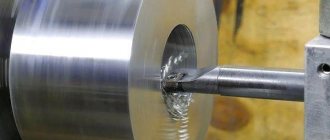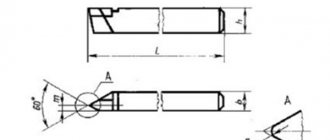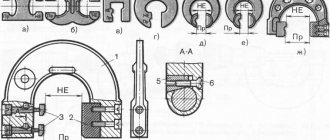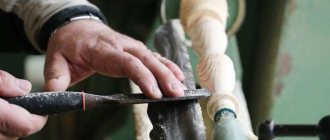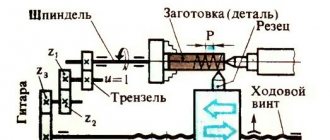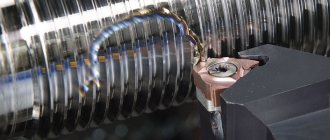Milling is the process of processing parts using a special installation. This type of work is very widespread, along with turning or drilling. The workpiece, which is shaped on such a machine, can be made of various materials. A milling cutter is a sharp tool with gears. When started, the product begins to rotate at high speed and grind the surface of the workpiece in the right place.
What milling devices are there?
When producing products with a small volume of milling work, you should not buy a separate unit. Small flat elements, recesses and grooves can be made using a special device on a lathe.
An industrial model of such equipment is a universal lathe with a milling head. The device is installed on the headstock or on the rear support and is activated from a common control panel.
For home equipment, especially tabletop lathes, the milling unit is produced by industrial enterprises, and craftsmen do it themselves. Using devices on a part installed in turning equipment, the following is performed:
- removing bald spots;
- edge milling;
- selection of grooves;
- grinding a flat surface.
If there is a dividing head, polyhedra are made and splines are milled.
Reference! Using a milling device, holes are drilled along the ends of flat parts and the surface is ground.
MILLING ON… TURNING
When manufacturing parts in various technical creativity circles, the need often arises to perform work with end and end mills. In this case, desktop horizontal milling machines will not always be able to help out.
But such operations, if you use the device we offer, can be performed on conventional screw-cutting lathes, model TV-4. It is very simple in design, and at the same time, its use significantly expands the functionality of the machine.
The main part of the device is a bracket installed on the transverse support of the machine instead of the removed carriage. The latter (item 2 in Figure 1) is located vertically, for which it is attached with two bolts to the front wall of the bracket; the tool holder is removed. Faceplate 3 with clamps 4 from the TV-4 machine set is fixed on the tool holder mounting axis using a nut. The workpiece is clamped with clamps as usual.
Rice. 1. Equipment for the TV-4 lathe for working with cutters:
1 — bracket, 2 — support carriage, 3 — faceplate, 4 — faceplate clamp, 5 — spindle, 6 — workpiece, 7 — sketch tablet, 8 — bracket with tracking pointer. In the side view, parts 7 and 8 are not shown.
The bracket is welded from sheet steel 6...8 mm thick and attached to the caliper with two screws and M8 nuts through a Ø 8.5 mm hole in the base. A special threaded washer is used for centering.
Rice. 2. Bracket:
1 — front wall, 2 — side wall (2 pcs.), 3 — base, 4 — threaded washer.
The cutter (end or face cutter) is mounted either directly in the tapered bore of the spindle or in the three-jaw self-centering chuck of a lathe, although drill chucks can also be used. It should be noted that the standard protective screen completely covers the cutting area during operation.
To make it easier to control the movement of the cutter, the kit includes a sketch holder and a tracking pointer; their structure is clear from the figure.
Using the proposed equipment, the following operations can be performed on the TV-4 lathe: milling planes, cutting grooves and grooves (including shaped ones), processing parts along the contour. By moving the support and carriage along three coordinates, in addition to rotating the bracket in the horizontal plane and the carriage in the vertical, it is possible to process any surface.
This device is successfully used in training workshops at the Department of Labor Training Methods of the Chernigov Pedagogical Institute.
O. SIROMAKHA, N. SERDIUK, Chernigov
Source
Types and purpose
Depending on the design and technological application, milling devices are conventionally divided into groups:
- head with separate drive;
- console;
- device for fixing the part.
The milling head is installed on the caliper body from the rear and moves with it in the longitudinal and transverse direction. The vertical stroke is carried out along the guides of the rack of the device itself. The head has its own electric drive, gearbox and controls.
The design of the console is much simpler. The electric drive is used only to rotate the spindle. The rotation speed of the tool can be adjusted only by rearranging pulleys with different diameters. The transmission is belt driven, directly from the motor shaft to the spindle. The set-top box is powered from the equipment network.
Important!
On desktop models of lathes, the milling attachment can be connected directly to a 220 V household network.
A simple mechanical device - a device for milling - allows milling to be done manually. It is installed instead of a tool holder. Vertical guides are cut out on the stand to move the spindle along the Z axis. The part is attached to it and moves relative to the tool rotating in the spindle along the X and Y axes. Vertical displacement of the workpiece is carried out manually.
Description of jaw chucks
Lathe chucks for machine tools can have 2-4 jaws. If extremely precise alignment is not required, it is advisable to use 2-jaw chucks. In most cases, small parts, forgings (blanks processed by forging or hot stamping) and castings (blanks cast into a mold or obtained by injection molding) are fixed in them. As a rule, such devices for lathes are designed to secure parts with precisely defined geometric characteristics.
4-jaw chucks are used when processing parts of any shape. The cams in them can be centered without problems due to the fact that they have an individual drive. If chucks with a similar “own” drive are used, unsymmetrical and orthogonal parts can be machined on the machine.
And self-centering 4-jaw chucks are mainly suitable for square bars.
The most widely used are 3-jaw chucks. They make it possible to perform high-quality work with round bars of large cross-section, parts with hexagonal and round configurations. This equipment for metal work is distinguished by its high clamping force and simple design, as well as simple reconfiguration for processing blanks of different sizes. The cams are either solid or assembled. The disadvantages of 3-jaw chucks include the fact that they quickly lose accuracy with intensive use.
Milling and grinding accessories
The device is installed in place of the tool holder and moves together with the support and cross slide. On the frame of the device for milling and grinding, a spindle is attached for the tool:
- end mills;
- cylindrical;
- grinding discs;
- conical abrasive wheels.
The device for milling and grinding has its own electric motor connected to the spindle head shaft by a belt drive. Electricity consumption comes from the machine system.
Additional details
The use of milling fixtures on a lathe is impossible without the use of additional parts. To mount the unit on the caliper body, you have to make holes and secure the base of the device with bolts.
Additional supports - rests, will reduce the deflection of a long shaft during processing. The center holds a long piece. Collets are necessary for securing cutters in the lathe chuck and fixture spindle. They rigidly fix the tool shank, center it and increase processing accuracy.
The use of a machine rotary vice increases the angle of rotation of the part without reinstallation, increasing the capabilities of the equipment. When working according to the template, a copy sleeve or bearing is installed. It accurately guides the tool along a given path.
Milling of titanium products
Titanium is more difficult to machine than blanks such as steel. This happens for the reason that the thermal conductivity of this metal is lower, and therefore the workpiece heats up more during processing.
Specialists who engage in milling work use the following methods for high-quality processing of titanium parts:
The contact area between the workpiece and the cutter is minimized;- a tool with a sharp cutting part and which has many teeth is selected;
- flying sawdust should be of small thickness;
- arc milling is performed first;
- after the tool has passed over the workpiece, a chamfer is removed at an angle of 45 degrees;
- a cutter with a large clearance angle is used;
- The depth of all axes is carefully observed, and with a small thickness of the part it decreases;
- the diameter of the instrument is no more than 70% of that selected by eye;
- cutters operating at high speed are used.
Tips and tricks
When choosing a device for a lathe, you should decide on the volume and type of work performed, and their accuracy. Then select the appropriate model according to the size of the equipment.
To produce single parts for repairing cars and home appliances, a simple device that fixes the part and moves it relative to the rotating chuck with the tool is suitable.
For a private workshop engaged in the manufacture of parts and simple products, it is worth buying a milling head and making complex parts with high productivity and accuracy.
When the workload is low, a milling device can replace a machine. At the same time, it does not require space for placing equipment, and saves time on reinstalling the workpiece from one operation to another.
What is the equipment for?
All equipment for lathes has 3 types. The first type of devices is specialized, providing an increase in the functionality of the equipment, the second is used to secure tools, and the third is used to fix products that are processed on machines. Installation of various types of devices provides:
Equipment for machine tools is manufactured in factories. Such devices are usually practiced in enterprises. Small companies and craftsmen at home often use homemade devices. Equipment for milling has become widespread - a specialized attachment that allows you to:
Finding drawings of such devices will not be difficult on the Internet and in special magazines.

